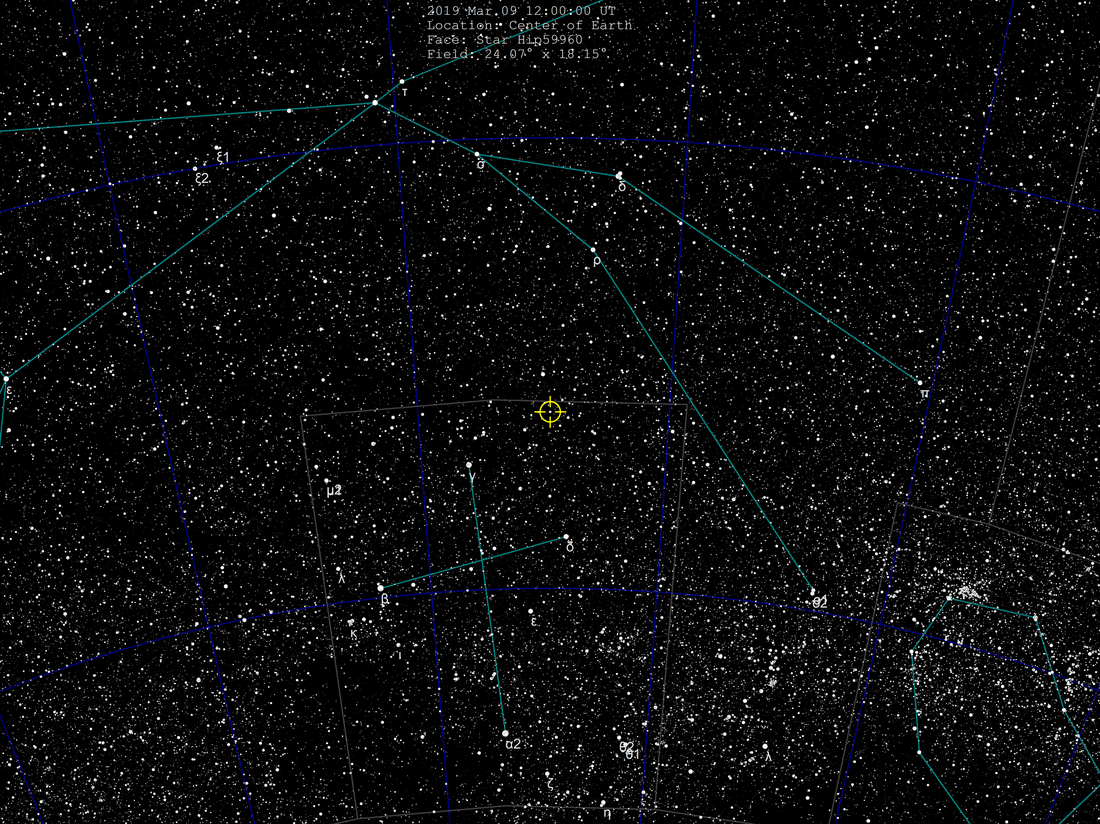Top Qs
Timeline
Chat
Perspective
HD 106906
Binary star in the constellation Crux From Wikipedia, the free encyclopedia
Remove ads
HD 106906 is a binary star[7] system in the southern constellation of Crux. It is too faint to be visible to the naked eye, having a combined apparent visual magnitude of 7.80.[1] The distance to this system is approximately 337 light years based on parallax, and it is receding from the Sun with a radial velocity of +10 km/s.[1] It is a member of the Lower Centaurus–Crux group of the Scorpius–Centaurus OB association of co-moving stars.[5]
This is a double-lined spectroscopic binary system consisting of two F-type main-sequence stars with similar masses and a matching stellar classification of F5 V.[7] Their orbital period is less than 100 days.[5]
Remove ads
Planetary system

A distant circumbinary planet—HD 106906 b—is orbiting the pair at a projected separation of 732±30 AU with a period of at least 3,000 years. An infrared excess around the binary is coming from a circumstellar debris disk that is being viewed edge-on. This has a pronounced asymmetrical shape, extending 120 AU on the east side and out to 550 AU to the west.[5] Planetary orbit is inclined to the debris disk by 39+20
−15 degrees, and planet itself is visible nearly pole-on, having a large axial tilt.[8]
Remove ads
References
Wikiwand - on
Seamless Wikipedia browsing. On steroids.
Remove ads

